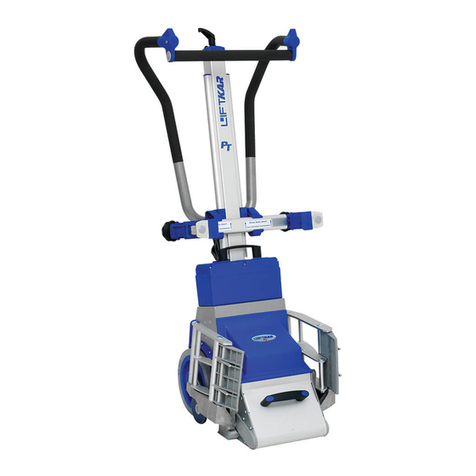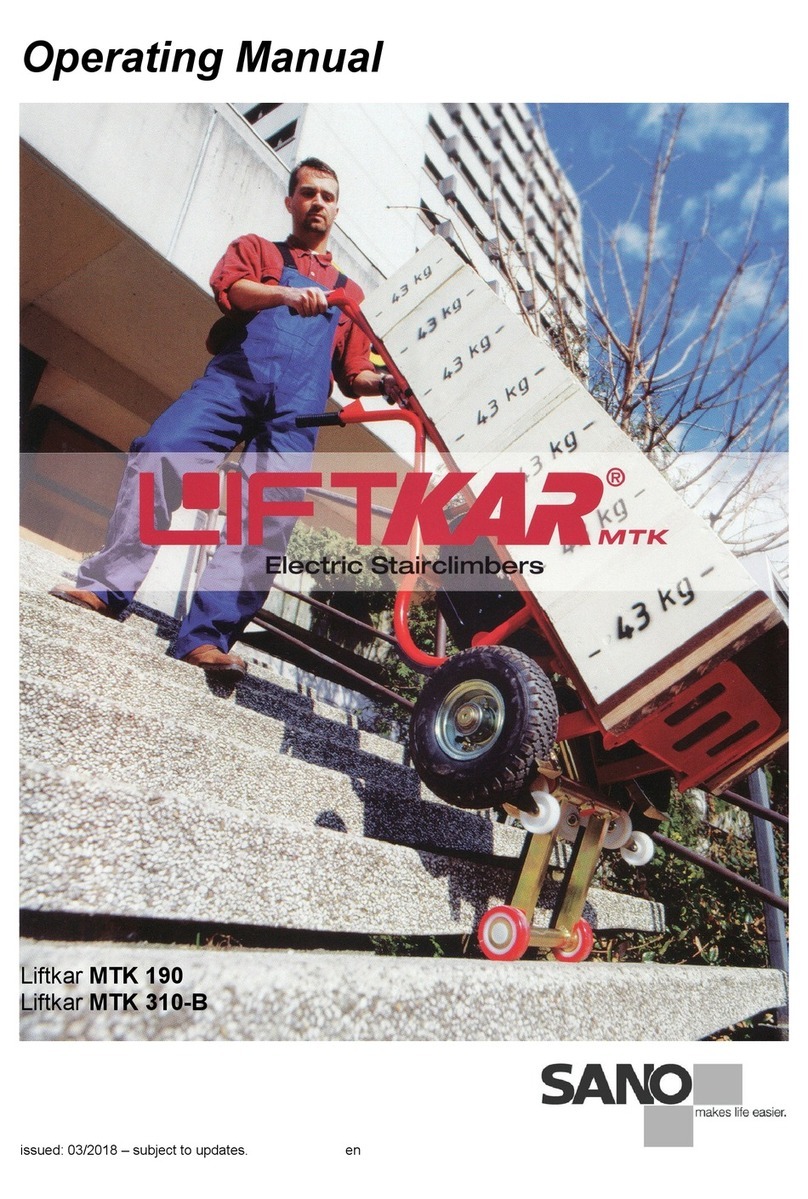
Liftkar SAL I 2
INTRODUCTION 3 .....................................................................................................................................................................
1 SAFETY GUIDELINES / TECHNICAL DATA 3 ........................................................................................................................
1.1 General safety guidelines 3 ............................................................................................................................................
1.2 Technical data of the LIFTKAR SAL 4 ..............................................................................................................................
1.3 Technical data of the snap on battery 4 .........................................................................................................................
2 CONTROLS 5 ..........................................................................................................................................................................
2.1 Model ERGO 5 ................................................................................................................................................................
2.2 Model FOLD / FOLD-L 6 ..................................................................................................................................................
2.3 Model UNI 6 ....................................................................................................................................................................
2.4 Control box 7 ..................................................................................................................................................................
2.5 Ascend button in upper handle 8 ...................................................................................................................................
2.6 Safety flap 8 ...................................................................................................................................................................
2.7 Main switch 8 .................................................................................................................................................................
2.8 Switching off 8 ...............................................................................................................................................................
3 FITTING AND REMOVING THE BATTERY 9 .........................................................................................................................
3.1 Fitting the battery 9 .......................................................................................................................................................
3.2 Removing the battery 10 ...............................................................................................................................................
4 OPERATION 10 ......................................................................................................................................................................
4.1 Ascending stairs 10 ........................................................................................................................................................
4.2 Descending stairs 11 ......................................................................................................................................................
4.3 Please pay attention to 12 .............................................................................................................................................
5 CHARGING THE BATTERY 15 ...............................................................................................................................................
5.1 Battery charger 15 .........................................................................................................................................................
6 ACCESSORIES AND OPTIONS 16 .........................................................................................................................................
7 DISPOSAL 17 .........................................................................................................................................................................
8 WARRANTY AND LIABILITY 17 ............................................................................................................................................
8.1 Warranty 17 ...................................................................................................................................................................
8.2 Liability 18 .....................................................................................................................................................................
9 CE DECLARATION OF CONFORMITY / DESIGN PROTECTION BY PATENTS 18 ..............................................................
CONTACT 19 ..............................................................................................................................................................................





























